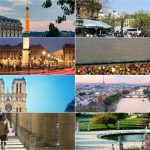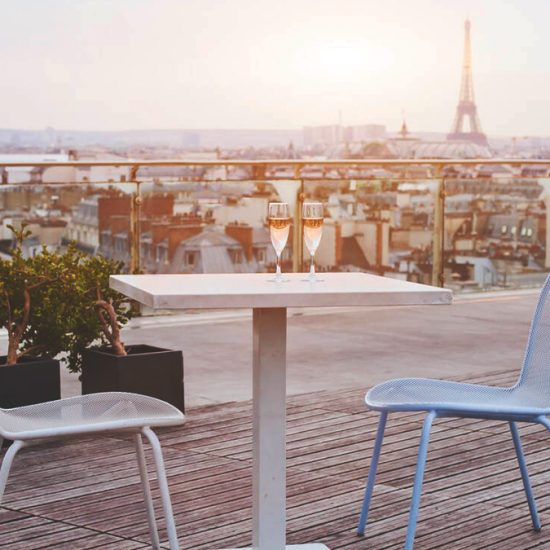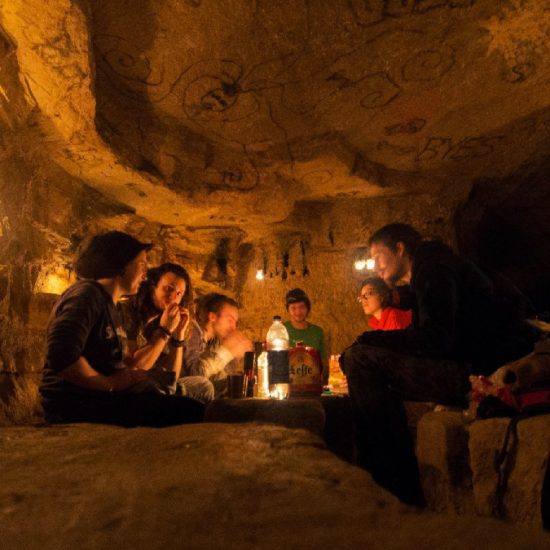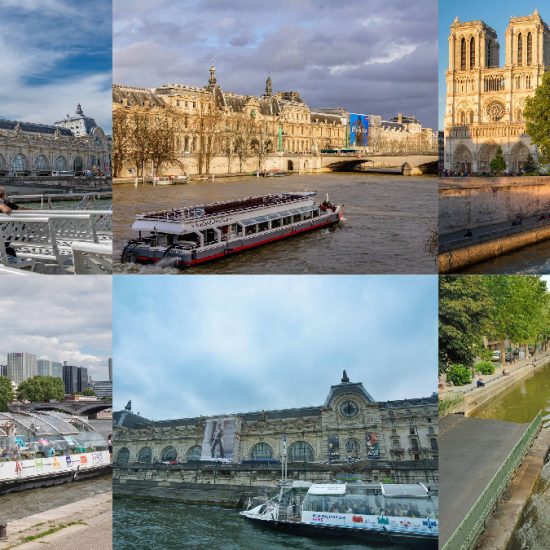Table Of Content
- Famous Architecture in Barcelona Spain
- Sagrada Família
- Casa Batlló
- Park Güell
- Casa Milà (La Pedrera)
- Barcelona Cathedral (Catedral de Barcelona)
- Palau de la Música Catalana
- Hospital de Sant Pau
- Torre Glòries
- Moorish Architecture in Barcelona
- What Type Of Architecture Is In Barcelona?
- As a Final Note
- Frequent Asked Questions
Positioned on Spain’s northeastern coast, Barcelona is an exciting and fascinating city that expertly integrates a rich heritage, fantastic architecture, and a dynamic contemporary society. Architecture in Barcelona exemplifies its diverse architectural styles, artistic creativity, and long history. Barcelona is a city imbued with Antoni Gaudí’s creative vision, represented by his iconic modernist architecture, such as the Sagrada Família, Casa Batlló, and Park Güell. The fascinating fusion of Gothic and contemporary design in the town creates a unique visual tapestry that tells the tale of its diverse inspirations.
Famous Architecture in Barcelona Spain
Barcelona is dedicated to well-known buildings that demonstrate its culture and long past.
Sagrada Família

The Sagrada Família, a blend of exquisite design, spiritual significance, and the distinct touch of renowned Catalan architect Antoni Gaudí, stands as an iconic symbol of Barcelona’s architectural beauty. Take a closer look at this famous architecture in Barcelona, Spain:
Architectural Marvel:
The cathedral called the Sagrada Família is a perfect example of the confluence of Art Nouveau and Gothic architecture. Taking control of the project in 1883, Antoni Gaudí dedicated himself to building a tower of unparalleled grandeur and complexity until he died in 1926.
2. Distinctive Facades:
The three elaborate facades of the basilica—the Nativity, the Passion, and the Glory—each depict one particular aspect of the life of Christ. The Nativity Facade, embellished with elaborate sculptures, reflects the joyous elements of life and Gaudí’s early influences.
In contrast, the Passion Facade portrays Christ’s agony and crucifixion in sharp, geometric sculpture that evokes a sense of drama and suffering. Although still under construction, the imposing Facade is supposed to celebrate the human and divine realms with beauty, judgment, and death themes.
3. Tower Heights and Symbolism:
The Sagrada Família is crowned with an array of towers, each representing an alternate biblical figure. The twelve Staying Alive towers stand in for the apostles, whereas the four around the central tower, dedicated to Jesus Christ, represent the Evangelists. When completed, the Sagrada Família is expected to have 18 towers, with the world’s highest church tower at the top of the central spire.
4. Interior Grandeur:
The basilica’s interior is a visual feast, with magnificent stained glass windows that flood the room with colour, towering columns fashioned after a forest, and an organic harmony that defines Gaudí’s unique style.
Gaudí’s devotion to natural forms and religious symbolism is evident in the meticulously sculpted decorations that add to the mystical mood of the light-filled nave.
Casa Batlló

Architect Antoni Gaudí’s Casa Batlló masterwork is a treasure on Barcelona’s Passeig de Gràcia. The building, renowned for its spectacular Modernist architecture, is a kaleidoscope of vivid hues, wavy curves, and whimsical accents. Gaudí’s distinctive aesthetic is on display in the exterior, which looks like the back of a dragon. The interior features a delicate mix of natural light and organic forms.
The Noble Floor is an excellent instance of Gaudí’s meticulous craftsmanship and exquisite woodwork. The rooftop, topped by a dragon sculpture, gives Barcelona’s skyline a quirky touch. Apart from serving as an architectural wonder, Casa Batlló is a must-see architecture in Barcelona that invites visitors to immerse into Antoni Gaudí’s magical world in the middle of the city.
Park Güell

Barcelona’s Park Güell is a breathtaking representation of architect Antoni Gaudí’s creative genius. The park offers sweeping metropolis vistas and unique and colourful buildings atop Carmel Hill. Enchanting elements like Gaudí’s famous mosaic-tiled sculptures, swinging seats, and colourful reptile sculpture, “El Drac,” add to the scene. Park Güell was once intended as a residential development before turning into a public park in the early 20th century. Today, Gaudí’s fanciful and surreal landscape architecture in Barcelona can be strolled around at this popular site and UNESCO World Heritage Site.
Casa Milà (La Pedrera)

Constructed by the visionary Antoni Gaudí, Casa Milà, occasionally referred to as La Pedrera, is an impressive architectural artwork in the heart of Barcelona. This 1912 Modernist masterpiece is known for its wrought-iron balconies, unique rooftops with bizarre sculptures, and swaying stone facade. La Pedrera, which means “The Quarry” in English, reflects Gaudí’s deep affinity for the natural world and his skill at fusing artistic endeavour with practicality. Once home, the structure is now a cultural hub where guests can explore its intriguing interior areas, including famous courtyards and apartments. La Pedrera provides evidence of Gaudí’s talent and Barcelona’s status as a city full of architectural marvels.
Barcelona Cathedral (Catedral de Barcelona)

The beautiful Gothic Barcelona Cathedral, called the Catedral de Barcelona, is tucked back amid the city’s quaint Gothic Quarter. This famous cathedral, dating back to the 14th century, is renowned for its beautiful Gothic façade, intricate gargoyles, and soaring spires.
With elaborate chapels, a beautiful high altar, and a brilliantly carved choir, the interior has an air of peace. Explore the Gaudi architecture in Barcelona, which has a lovely courtyard with geese living in it. Barcelona Cathedral is a renowned memorial with a rich history and spectacular architecture that draws visitors as well as locals to be in awe of its enduring beauty and spiritual significance.
Palau de la Música Catalana

Architect Lluís Domènech i Montaner’s artistic vision is perfectly represented in the concert hall situated in Barcelona, the Palau de la Música Catalana, an icon of Catalan Modernism. This UNESCO World Heritage Site, which was completed in 1908, is a celebration of both architectural brilliance and cultural diversity. The intricate mosaics and sculptures on the façade allude to the interior’s visual beauty. Boasting its stunning skylight, sculpted columns, and stained glass, the interior is a symphony of colour and light. The concert hall offers a range of events, transforming it from an architectural marvel to an active cultural hub where art and music come together in beautiful surroundings.
Hospital de Sant Pau

The pinnacle of Catalan architecture, the Hospital de Sant Pau in Barcelona, is an ode to the vision of architect Lluís Domènech i Montaner. This modernista complex, completed in 1930 and recognized for its innovative and balanced architecture, is a UNESCO World Heritage Site. The hospital’s pavilions, filled with colourful tiles and sculpted characteristics, provide a calm and attractive atmosphere. The verdant gardens and open areas improve the institution’s healing atmosphere. Apart from being a historical and architectural icon, the Hospital de Sant Pau symbolizes Barcelona’s dedication to combining practicality and aesthetic value in medicine.
Torre Glòries
Previously known as Torre Agbar, Torre Glòries is a fantastic architecture in Barcelona’s modern skyscrapers that dominate Barcelona’s skyline. Completed in 2005, this architectural artwork was designed by architect Jean Nouvel. With hundreds of vibrant aluminium strips arranged in a glass facade, its modern and unique layout creates a dynamic and ever-changing visual impression. The tower becomes particularly attractive when lit at night, transforming into a shining star in the Barcelona sky. In Barcelona’s dynamic cityscape, Torre Glòries has come to represent innovation and modernity in architecture. It has become an iconic symbol of contemporary architecture.
Together, these famous structures enhance Barcelona’s standing as a city with a rich and varied architectural legacy, which draws millions of tourists each to marvel at its historical and artistic riches.
Moorish Architecture in Barcelona
Although it is not a popular construction style in Barcelona, Moorish architecture, with its distinctive Islamic design elements, has had an essential impact on several other places. Gothic, Romanesque and Modernist architectural styles are more commonly found in Barcelona. However, certain features of some structures, particularly those that date from when Catalonia was a part of the Crown of Aragon, unambiguously show the impact of the Moors.
The Palau Reial Major (Royal Major Palace) in Barcelona’s Gothic Quarter serves as one illustration. The Saló del Tinell, a large hall with pointed arches and ornamental features evoking the Moors, is part of this historic palace that dates back to the Roman era and was modified throughout the medieval era.
While Moorish architecture in Barcelona may not dominate its architectural landscape, exploring the city reveals a rich tapestry of influences contributing to its unique and diverse aesthetic. The prominence of Gothic and Modernist styles and traces of Moorish influence create a fascinating architectural mosaic in this vibrant Spanish city.
What Type Of Architecture Is In Barcelona?
The architecture in Barcelona is notably diverse, encompassing a range of styles that have evolved over centuries. The prominent architectural styles in Barcelona include:
1. Gothic Architecture: The Barcelona Cathedral (Catedral de Barcelona) is one of the city’s many magnificent Gothic buildings. This building is a classic representation of the Gothic style due to its elaborate façade, lofty spires, and beautiful design.
2. Modernist Architecture: Barcelona’s Catalan Modernist, or Modernist, architecture is widely recognized worldwide. Architect Antoni Gaudí, an essential figure in the late 19th and early 20th centuries, is an outstanding instance of this style. His constructions, such as Park Güell, Casa Batlló, and the Sagrada Família, are known for their organic forms, avant-garde techniques, and defiance of the traditional understanding.
3. Romanesque Architecture: Romanesque influences may be observed in some of Barcelona’s ancient buildings, especially in the Gothic Quarter and Old Town. One example of a building with traits from several historical eras, including the Roman and feudal periods, is the Palau Reial Major, or Royal Major Palace.
4. Contemporary Architecture: Modern and modern structures can also be observed in architecture in Barcelona, Spain. The city’s modern skyscraper, Torre Glòries (originally Torre Agbar), built by Jean Nouvel, is a notable representation of contemporary architecture.
5. Moorish Influences: There are traces of Moorish influence in some Barcelona structures, but not as much as in other parts of Spain. For instance, Moorish-style decoration can be found in the Saló del Tinell at the Palau Reial Major.
Merging these different architectural ideas adds to Barcelona’s distinctive and attractive urban setting.
As a Final Note
Barcelona is a beautiful example of how different kinds of architecture, creative imagination, and a rich cultural tapestry coexist peacefully. The basis of this city’s architectural grandeur is the famous creations of Antoni Gaudí, whose impact can be readily seen in structures such as Park Güell, Casa Batlló, and the Sagrada Família. These buildings, which initially blended Gothic and Art Nouveau styles, are an outstanding instance of Barcelona’s dedication to embracing contemporary design and preserving its cultural past.
Gaudí’s creations are not the unique structures in Barcelona. The Gothic Barcelona Cathedral, with its ornate façade and towering spires, is an eternal symbol of the city’s spiritual and cultural significance. The Palau de la Música Catalana, an accomplishment by Lluís Domènech i Montaner, blends architectural brilliance and cultural diversity to celebrate Catalan Modernism.
The Hospital de Sant Pau, a UNESCO World Heritage Site, is a testament to Barcelona’s dedication to fusing aesthetic value with pragmatic medical use. Meanwhile, Torre Glòries, formerly Torre Agbar and its dynamic skyline reflect the city’s embracing of innovation and modernism.
Barcelona’s environment may not be defined by Moorish architecture, but structures like the Palau Reial Major show subtle Moorish influences that emphasize the city’s rich historical tapestry. Millions of tourists are attracted to the famous architecture in Barcelona, Spain, which blends Modernist, Gothic, and Moorish elements to produce an intriguing and unique look. The city’s position as a centre of stunning architecture worldwide results from how it can retain the lasting heritage of its architects, past and present.
Frequent Asked Questions
What Kind Of Architecture Is In Barcelona?
Barcelona blends Gothic, Romanesque, and Modernist architecture components to create an extensive range of architectural styles. The city is renowned for its unique Modernist architecture, including some of Antoni Gaudí’s most famous works.
What Architecture Is Barcelona Famous For?
The Modernist architecture of Barcelona is particularly popular, with Antoni Gaudí’s masterpieces standing out among architectural characters. Sagrada Família, Casa Batlló, and Park Güell are the city’s most significant architectural riches, combining Gothic and Art Nouveau styles.
What Is The Architecture In Barcelona?
Various Gothic, Romanesque, and Modernist designs define Barcelona’s architecture. The extraordinary Modernist designs by Antoni Gaudí, distinguished by their complex craftsmanship and organic forms, forever changed the city’s architectural landscape.
Where Is Gaudi Architecture In Spain?
The majority of Antoni Gaudí’s masterpieces of architecture can be discovered in Barcelona, Spain. The Sagrada Família, Casa Batlló, Park Güell, and Casa Milà (La Pedrera) are the most prominent landmarks. The finest instance of Gaudí’s effect is in Barcelona, where his inventiveness has irrevocably shaped the city’s architectural identity.








No Comment! Be the first one.